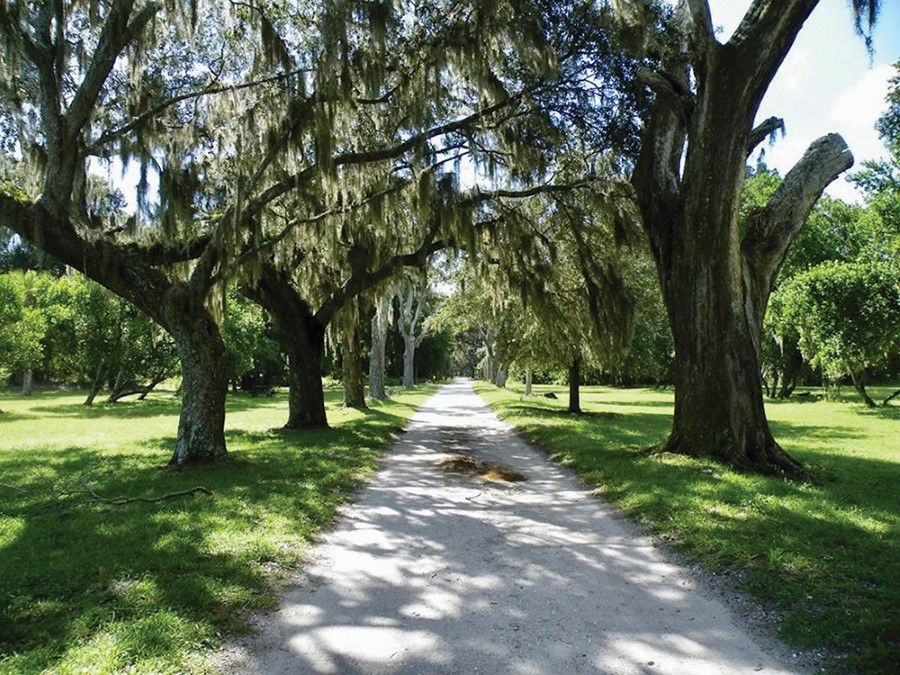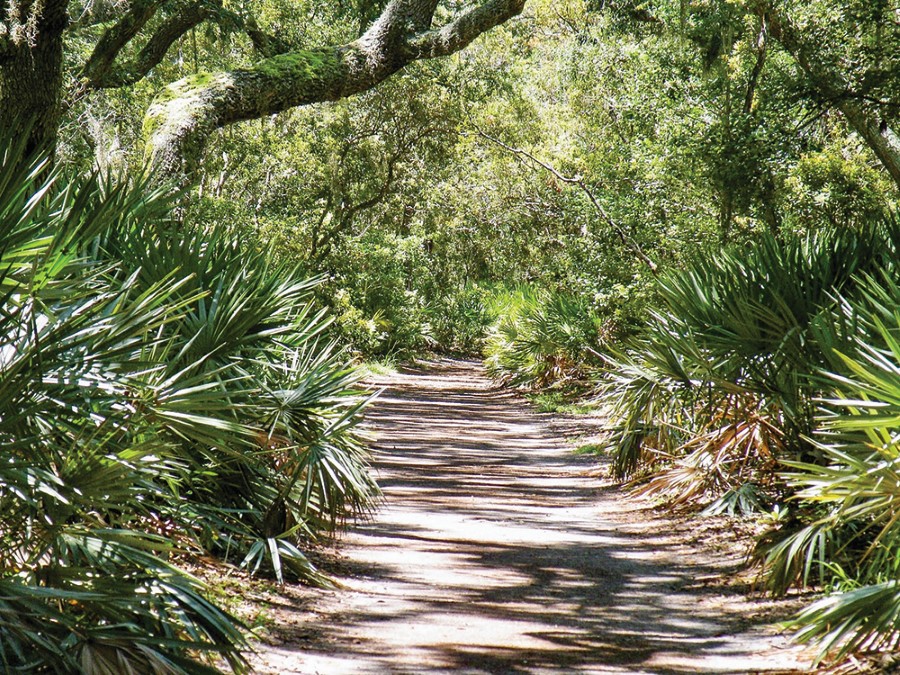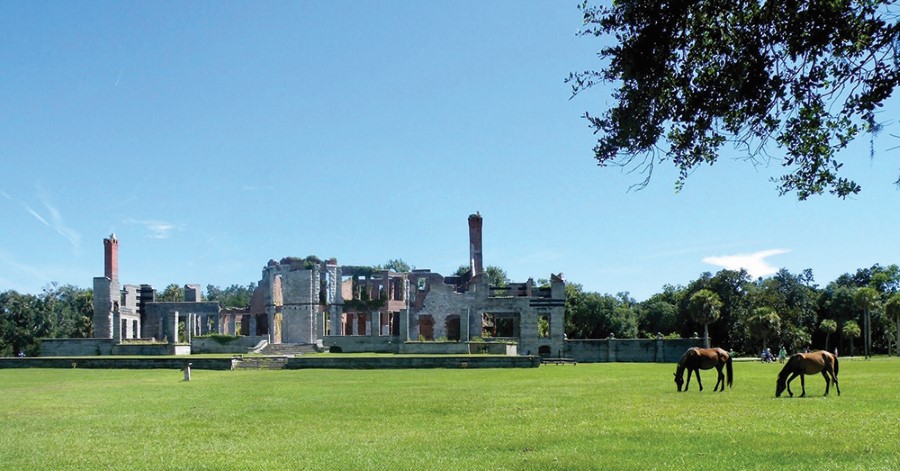Off the Southern coast of Georgia lies an 18 mile stretch of undeveloped beaches, pristine maritime forests, and spacious marshland known as Cumberland Island.
Now protected as a National Seashore, Cumberland Island has a rich history full of Native American culture, colonial settlements, pirate attacks, war heroes, and glimpses of the opulent lifestyle from the Carnegie era.
Some of the earliest inhabitants of the island were from the Timucuan people. Cumberland later became part of the Spanish missionary province of Florida. Records indicate that in the early 1680’s there were several Spanish Priests and around 300 natives living on the island. Around this same time, several priests and natives fled after French pirates attacked, looted, and burned many of the buildings on the island. Only a year after the French attack, a Spanish pirate attack led to the remaining priests and natives of that tribe to seek the safety of the mainland as well. By 1774, the island was largely uninhabited.

Several years later and as part of a deal brokered during the Revolutionary War, General Nathanial Greene acquired 11,000 acres on Cumberland Island. After his death, his widow, Catharine, remarried and constructed a 4-story tabby house on the island. She named it Dungeness to pay homage to the hunting lodge that had been previously built by Georgia colony founder, James Oglethorpe. Catharine and her new husband, Phineas Miller, hosted many prestigious events on the grounds of Dungeness and it became a regular venue to many military leaders and statesmen alike. One such person to retreat to Cumberland Island was the ailing General “Lighthorse” Harry Lee on his way back from the West Indies. Having been a longtime friend of Catharine, Lee sought the serenity of Cumberland Island where he passed from his illness and was buried. General Robert E. Lee, his son, had a gravestone placed at his burial site and was known to have visited the location on several occasions. General “Lighthorse” Harry Lee’s body was eventually moved to lie next to his son, but the gravestone does still stand on the island. During their time on the island, the Millers became the largest producer of Sea Island cotton and went on to be of assistance on the development of the cotton gin to Eli Whitney. Many years later, Dungeness caught fire and burned down.
Thomas Carnegie and his wife, Lucy, bought land on Cumberland as a winter retreat in the 1880’s. In 1884, they began building the mansion that would also be named Dungeness. The mansion was designed as a nearly 60 room Scottish castle with pools, a golf course, and 40 other smaller buildings which required a staff of 200. Although Mr. Carnegie did not live to its completion, his wife and nine children continued to live on the island. Lucy Carnegie eventually had additional estates built for her children, including Greyfield (currently serving as an inn run by the Carnegie family), Plum Orchard (operated by the National Park Service), and Stafford Plantation (privately owned by the Carnegie family). After the Stock Market Crash and the Great Depression, the Carnegie family left the island and the mansion was empty. In 1959, Dungeness burned again. It is believed that the fire was intentionally set by a poacher who had been shot by a caretaker of the property some weeks before. The ruins of the grand Dungeness mansion are still standing on the southern end of the island and are one of the main attractions today.
Cumberland Island National Seashore does not only play an important part in human history, it is vital to the history and the future of the Loggerhead Sea Turtle as it typically reports the largest number of nesting sites per year. Last year was a record setting year as it documented over 1,000 sea turtle nests on the shores of Cumberland Island. The National Park Service has a sea turtle monitoring program utilizing interns that locate the nests and then spend time monitoring and protecting them from predation and tidal threats. After hatching, they conduct inventory to evaluate the success of the nesting season. Sea turtle nesting season usually begins in May and runs through October. If you are on the island during these months, keep an eye out on the beach for nesting females and hatchlings making their way to the sea. As with any wildlife encountered, please enjoy them from a safe distance.
Another noteworthy bit of wildlife to be seen on the island are the feral horses. It is believed that these are descendants of horses brought over by the Spanish in the late 1500’s. The number of horses on Cumberland is generally under 150. According to the National Park Service, Cumberland Island has the only unmanaged feral horse herd on the Atlantic coast. This means that the Park Service does not provide food, water, veterinary care, or population control to the herd. When visiting the island, please remember to keep your distance and let the horses have the right of way at all times.
Cumberland Island is absolutely filled to the brim with history and I’ve only been able to skim over some of the colorful events that have happened here over the years but I hope that I’ve been able to intrigue you enough to perhaps plan a visit. For further information, there is a large collection of books available on the island and I would highly recommend checking a few of them out.
To visit Cumberland Island, you will need to first start in St. Marys, Georgia. St. Marys is home to the ferry terminal, the mainland visitor’s center, and the museum. You will need to make a reservation in advance for the ferry at www.cumberlandislandferry.com. Once you arrive at the visitor’s center, you will pay the park admission and wait for the ferry to arrive for your 45 minute trip to the island. Please make sure you bring food, water bottles, bug spray, sunscreen, comfortable walking shoes, and any other essentials with you (and also that you pack out anything you bring onto the island).
Cumberland Island National Seashore is pretty rustic and there are no shops or other amenities on this island, but the rewards of being immersed in nature and history are well worth the trip. ■





